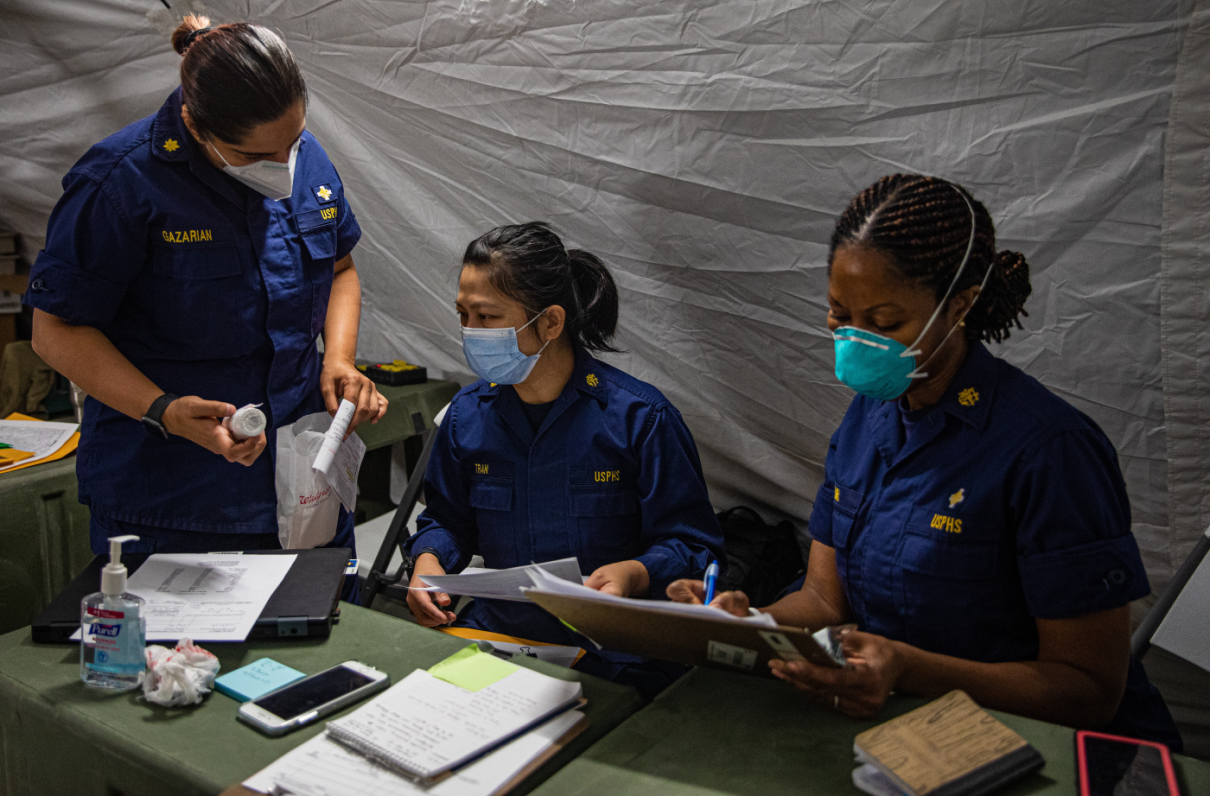As the FY 2023 National Defense Authorization Act moves forward, MOAA has provided a letter of support to bring parity to personnel policy and benefits for the newly formed U.S. Public Health Service Ready Reserve Corps.
The Commissioned Corps of the U.S. Public Health Service is one of the eight uniformed services, an all-officer cadre dedicated to protecting the public health of our nation. These servicemembers have been our frontline responders to urgent public health emergencies such as ebola, anthrax, natural disasters, and the COVID-19 pandemic.
The Coronavirus Aid, Relief, and Economic Security (CARES) Act, signed into law March 27, 2020, provided the authority and funding for the establishment of the Ready Reserve Corps as an additional force for future disease outbreaks, natural disasters, and public health emergencies. However, the initial authorization did not address all uniformed services’ entitlements, leaving gaps in personnel policy and benefits for the USPHS Ready Reserve relative to other branches’ reserve components.
“If not addressed, these parity gaps could become barriers to recruitment and retention and undermine the critical medical surge capacity provided by the new USPHS Ready Reserve Corps,” MOAA President and CEO Lt. Gen. Dana T. Atkins, USAF (Ret), wrote in a recent letter to Senate Armed Services Committee leadership.
[RELATED: The NDAA Can’t Wait: Ask Your Lawmakers to Act Before Year’s End]
The letter notes MOAA’s support for several amendments filed by Sen. Tammy Duckworth (D-Ill.) during the FY 2023 NDAA amendment process addressing these parity issues, including:
- Allowing USPHS Ready Reserve Corps members to have the same dual compensation and leave rights as those of the armed forces so all citizens, whether their primary job is working in private sector or for the federal government, can go on military leave with pay.
- Ensuring Ready Reserve Corps members are covered by the Uniformed Services Employment and Reemployment Rights Act (USERRA), and extending the military department exemption to the USPHS Commissioned Corps’ Regular Corps, which is in step with DoD.
- Extending Post-9/11 GI Bill and Montgomery GI Bill educational benefits to Ready Reserve Corps members once they meet time in service requirements.
- Bringing parity to Ready Reserve Corps TRICARE options by extending eligibility for TRICARE Reserve Select, TRICARE Retired Reserve, and the TRICARE Dental Program to Ready Reserve Corps officers. This amendment also would extend health care coverage for Ready Reserve Corps servicemembers injured when staying overnight during training or while on funeral duty, consistent with eligibility and coverage for other reserve component servicemembers.
- Codifying the structure of the Ready Reserve Corps in statute, enabling access to benefits and entitlements afforded reserve component servicemembers of all other uniformed services.
Full text of these amendments is available in the Congressional Record (PDF).
We understand at least one of these fixes was included in the Senate manager’s package of the FY 2023 NDAA. MOAA will continue to advocate for USPHS Ready Reserve parity fixes as the NDAA moves forward, and into the 118th Congress.

